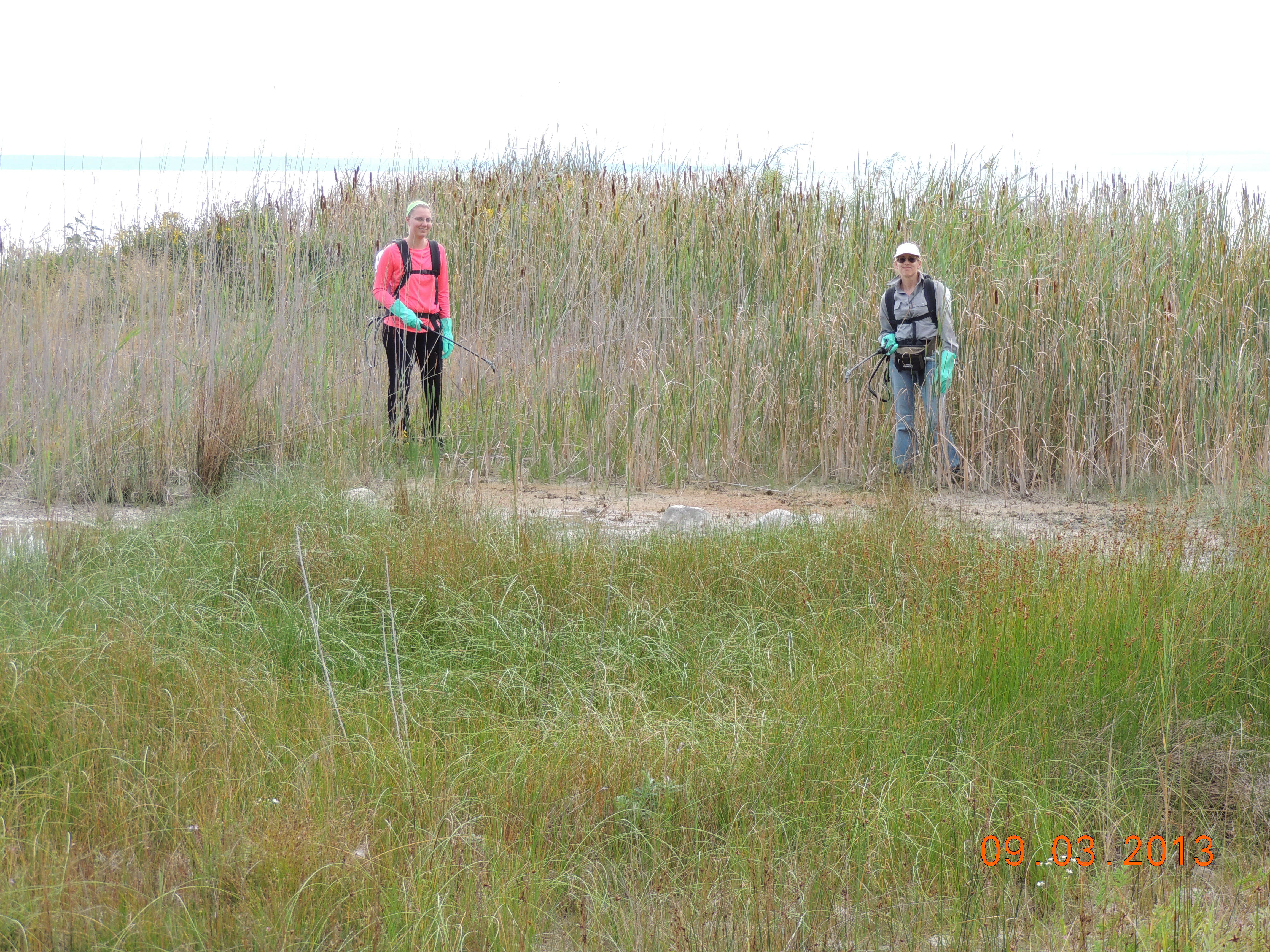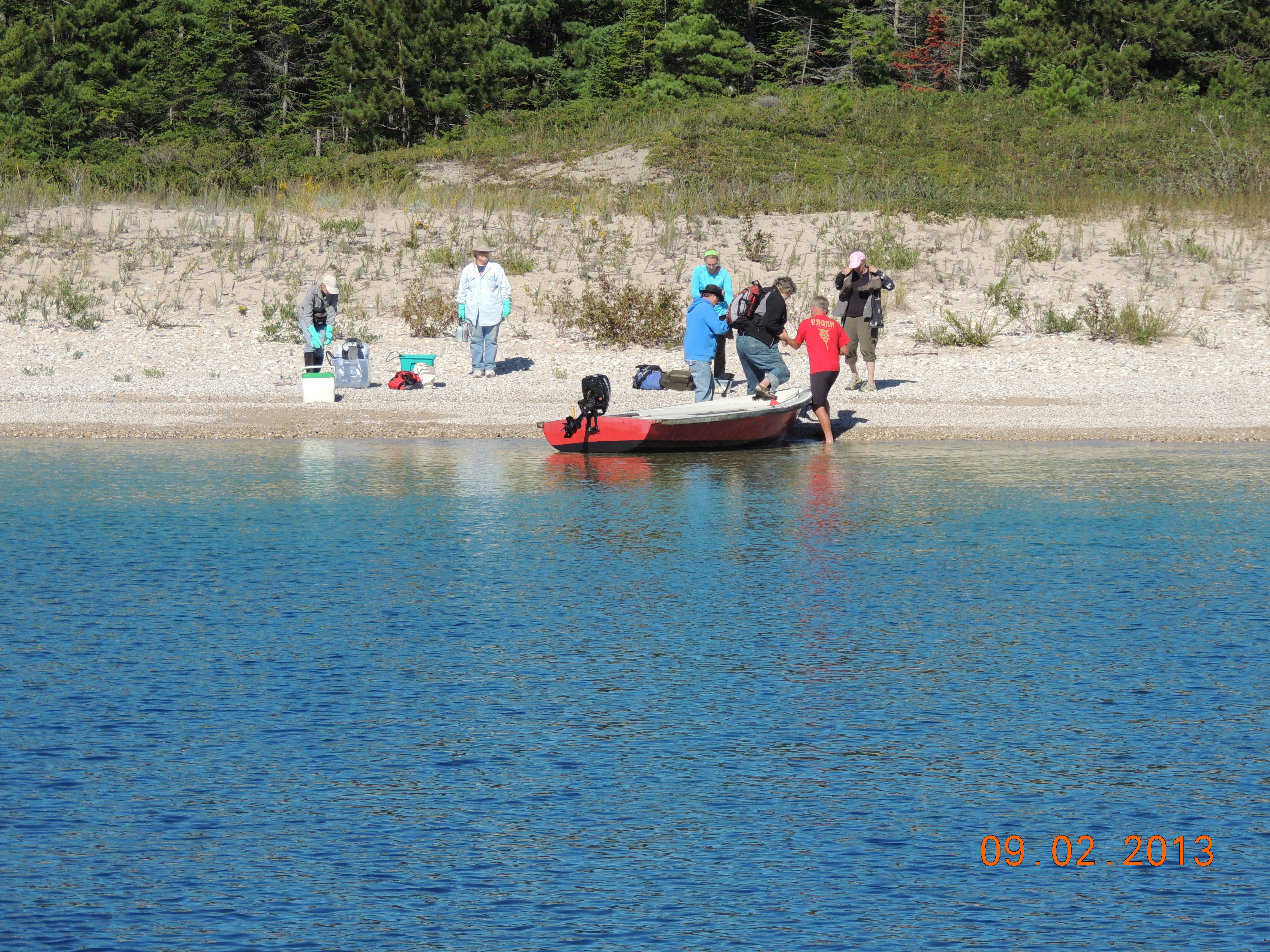Pam Grassmick fills us in on the Beaver Island Association’s Invasive Species Initiative and island-wide Phragmites control program.
What aspects of Phragmites management are you most involved in?
- Education/Outreach
- Direct management (e.g. spraying, burning)
- Planning
Geographic Scope
Beaver Island Archipelago, Lake Michigan, Charlevoix County Michigan.
Program includes: Beaver, Garden, High, Hog, Whiskey and Trout Islands.
Why is Phragmites an issue in your area?
The Island’s natural resources have been damaged as a result of weather, logging and recreation. Based on a 2010 report by the Nature Conservancy of Canada entitled “Islands of Life”, Beaver Island was included in the top ten islands with threatened biodiversity. Phragmites is a primary invasive plant species impacting this biodiversity and both the natural and human communities who reside there.
What is your organization’s approach to invasive Phragmites management?
The Beaver Island Association works in partnership with government and tribal agencies, non-profit organizations, and the community to develop projects aimed at eliminating invasive Phragmites from the islands. The Invasive Species Initiative Workgroup collaborates to identify potential projects and funding sources for each field season. In addition to ongoing partnerships with semi-annual meetings, the Association holds an Invasive Species Summit to inform and educate residents, local government staff, and visitors of the dangers of invasive species and actions they can take to lessen these threats.
Who are your partners in this effort?
Michigan Department of Natural Resources
The Nature Conservancy
Charlevoix Conservation District
Michigan Natural Features Inventory
The Little Traverse Bay Bands of Odawa Indians
What are your funding sources?
The Initiative is volunteer staffed through the Beaver Island Association. Projects are developed and implemented through partnerships and are almost entirely grant funded.
What are your goals and objectives for the program?
The purpose of the initiative is to identify & inventory endangered species and invasive plant species on Beaver Island and devise environmentally appropriate & effective measures to protect the former and control the latter.
- Goal 1: Educate. Property owners & visitors will be trained to identify invasive species & learn ways to eradicate them. A web site will be created to provide one-stop shopping information on invasive plant species. Educational events and products will be provided in multiple formats.
- Goal 2: Inventory. Develop & maintain lists of endangered & high threat invasive species. Establish a communication process for reporting random sightings with a ready-made form to use.
- Goal 3: Recruit. Recruit & train an EDRR (Early Detection Rapid Response) team to help treat infestations. Provide volunteers with opportunities to assist in detection, treatment and monitoring of invasive plants.
- Goal 4: Rehabilitate. Eradicate invasive species (dig up, spray, contain); Protect endangered species (signage, fencing, walk ways); Rehabilitate & replant sites where appropriate.
What type of land does your program target?
Coastal island communities, some human occupied and some with little or no permanent development. Major habitats include deciduous forest, beaches, and woody wetlands.
What is the status of the program and are you seeing results?
A coarse-level survey of Beaver, Hog, High and Garden Islands was completed in 2012. The survey and final report identified management actions for the islands, including Phragmites as one high priority invasive species. A comprehensive shoreline treatment of the four islands occurred during 2012. Follow-up spot treatments were completed in 2013.
During the 2013 follow-up treatment, visual observations indicate that the eradication efforts are being successful. This is evident by lower stands of Phragmites overall in areas previously treated, fewer stands containing seed heads and limited expansion of stand areas. New growth stems were treated for a second consecutive year and we are hopeful to see even more reduced production in 2014.
Can you share important lessons learned both about what worked and what did not work?
Many of the populations have been treated previously, but multiple treatments are typically necessary to eradicate populations. Aggressive monitoring for Phragmites should be a part of future invasive species surveys, keeping in mind the difference between native and non-native invasive varieties. Consistency with survey and treatments and maintaining our partnerships is key to improving eradication success.
For more information, please contact:
Pam Grassmick
P.O. Box 390
Beaver Island, MI 49782
(231) 448-2314
http://www.beaverislandassociation.org/invasives/


